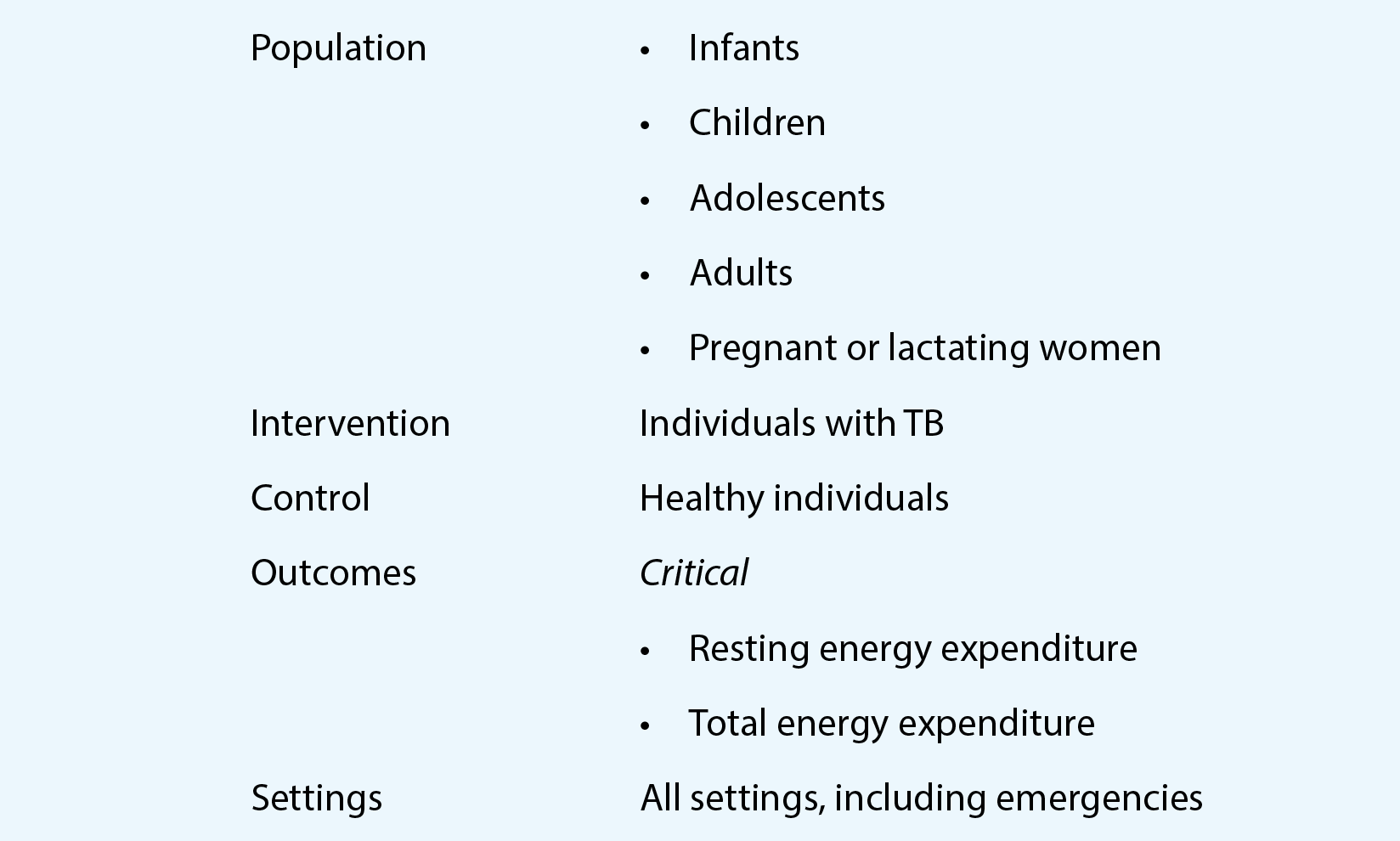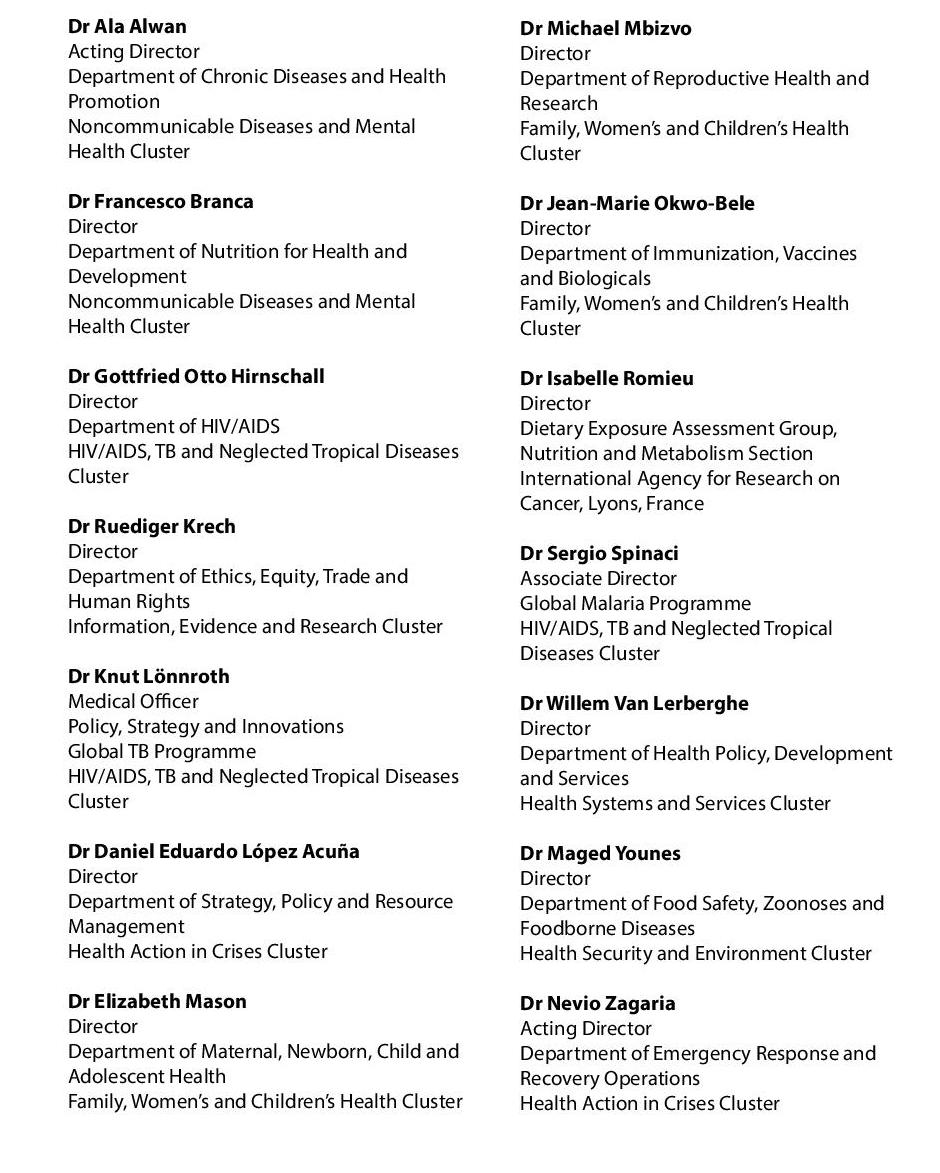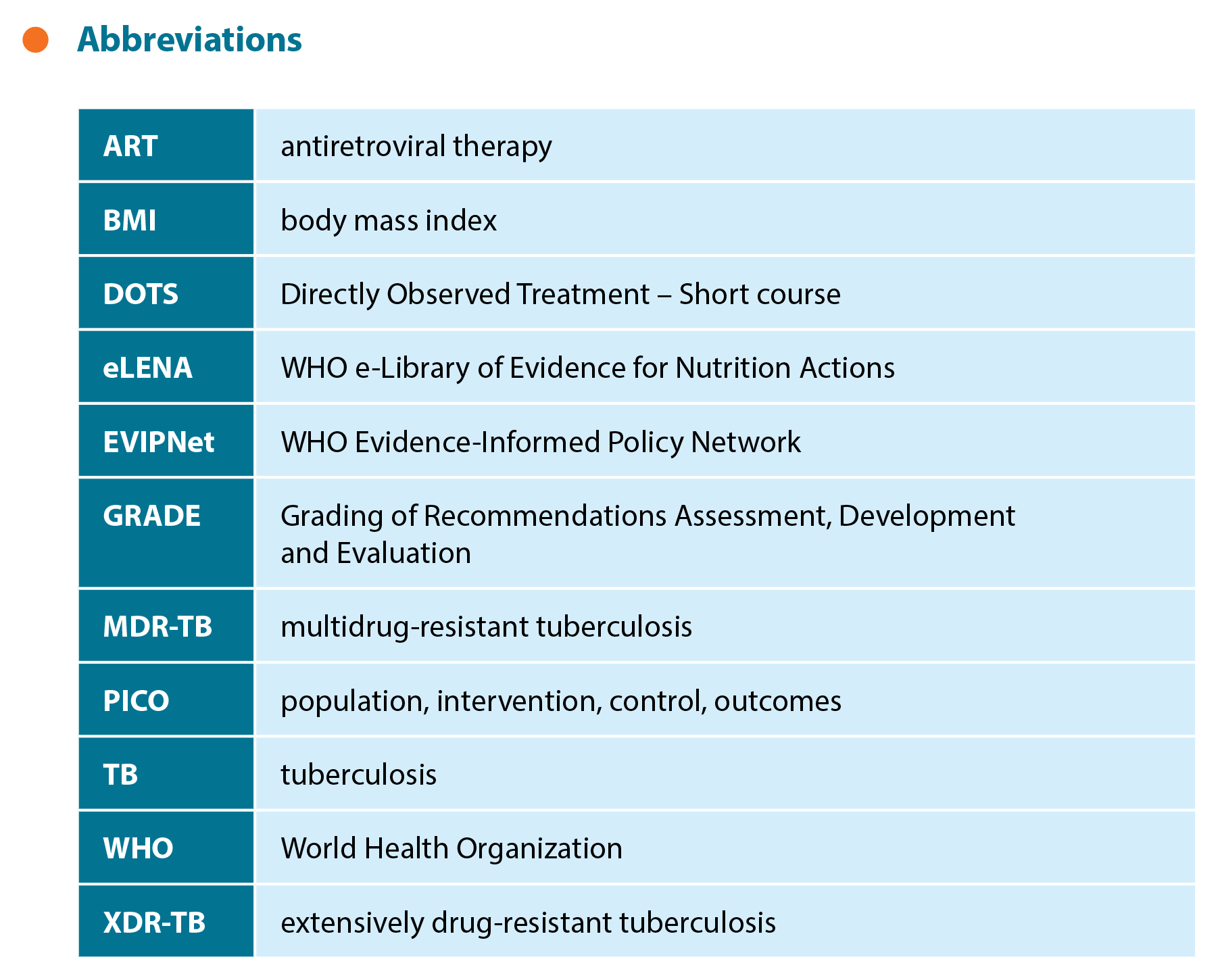Children and Adolescents
Annex 3 Questions in population, intervention, control, outcomes (PICO) format
1. What is the optimal composition of the diet for patients receiving treatment for active TB?
a. Do patients who are newly diagnosed with TB have increased energy requirements?

Annex 2 Summary of the Nutrition Guidance Advisory Group’s considerations for determining the strength of the recommendation
Nutrition assessment and counselling
Quality of the evidence:
Not available
Values and preferences:
The panel determined that since people with active TB are often underweight and have experienced weight loss by the time of diagnosis, and that low BMI is associated with increased mortality, nutrition screening and assessment is required to determine appropriate nutrition intervention and care.
References
1. WHO handbook for guideline development. Geneva: World Health Organization; 2012 (http://apps.who.int/iris/bitstream/10665/75146/1/9789241548441_eng.pdf, accessed 3 September 2013).
8. Plans for updating the guideline
This guideline will be reviewed in 2020. If new information is available at that time, a guideline review group will be convened to evaluate the new evidence and revise the recommendation if needed. The Department of Nutrition for Health and Development and the Global TB Programme at the WHO headquarters in Geneva, Switzerland, along with their internal partners, will be responsible for coordinating the guideline update, following formal WHO handbook for guideline development (1) procedures.
6. Recommendations
Nutrition assessment and counselling
- All individuals with active TB should receive (i) an assessment of their nutritional status and (ii) appropriate counselling based on their nutritional status at diagnosis and throughout treatment (strong recommendation, no evidence).
Management of severe acute malnutrition
4. Summary of the evidence
Systematic reviews were conducted to address the following questions (see Annex 3 for questions in PICO format)
1. What is the optimal composition of the diet for patients receiving treatment for active TB?
2. Should macronutrient supplements be recommended to improve TB treatment and health outcomes for well-nourished or undernourished patients (children, adolescents, adults and pregnant and lactating women) being treated for active TB?
2. Background
TB is a contagious disease related to poverty, undernutrition and poor immune function. TB morbidity and mortality are highest in developing countries. In 2012, there were an estimated 8.6 million new cases of TB (13% coinfected with HIV). There were 950 000 deaths due to TB among people who were HIV negative and another 320 000 among people who were HIV positive (7). While TB is more common among men than women, it is one of the top killers of women worldwide; including HIV-positive women, half a million women died from TB in 2012.
Pagination
- Previous page
- Page 24
- Next page

 Feedback
Feedback

